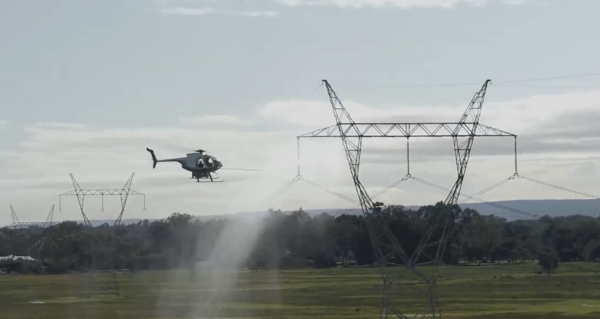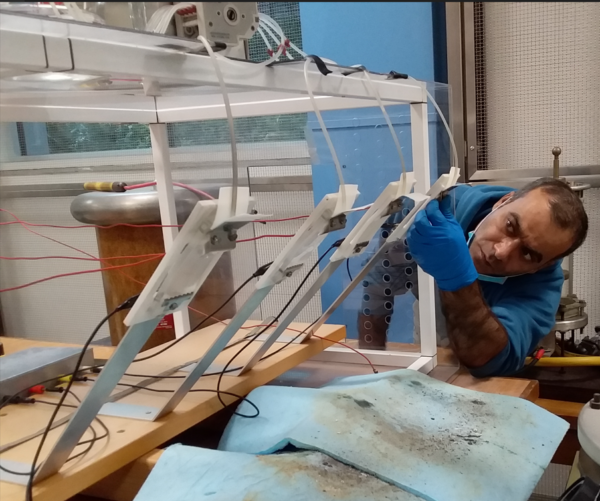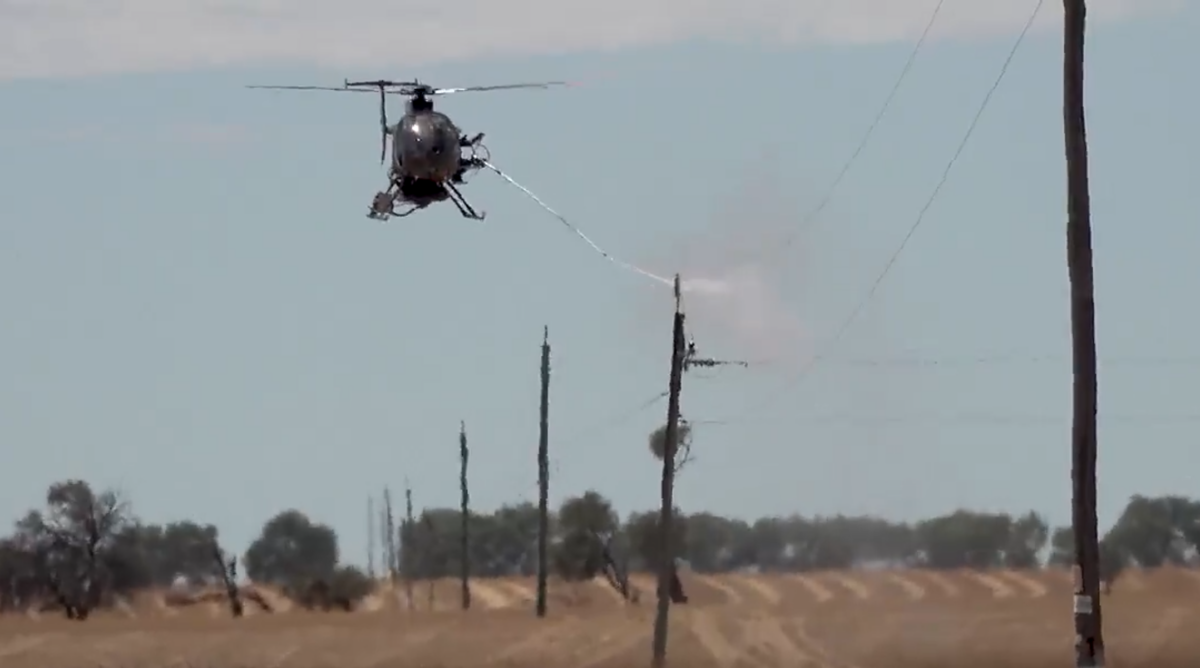Researchers from the RMIT University Melbourne School of Engineering and the University of New South Wales (UNSW) have developed a silicone rubber composite material that has improved the performance and safety of insulation materials for power poles at the lab scale.
Silicone rubber is widely used in electrical outdoor insulation applications due to its hydrophobic characteristics but its low flame and electrical surface discharge resistance present challenges in outdoor conditions.
The new silicone rubber composite material, comprising chopped fiberglass, aluminium hydroxide and a type of clay derived from volcanic ash as additives, has demonstrated high flame retardancy and surface discharge characteristics.
Analysis of the material published in the international journal Advanced Composites and Hybrid Materials shows the maximum average rate of heat emission in the material was measured at 24.93 kW/m2 compared to current commercial materials which measure at 61.29 kW/m2.

Image: Will Wright, RMIT University
RMIT University Vice-Chancellor’s Postdoctoral Fellow Dr Tariq Nazir said the material offers a potential solution for pole-top fires that pose significant challenges to power providers and communities worldwide.
“Dust and pollution builds up on power-line insulators, which enables electricity to spark and heat metal fixtures that can cause wooden power poles to catch fire,” he said.
“Our innovation could serve as a protective coating or paint for ceramic and glass insulators, providing extra defence against environmental factors such as moisture, pollution and fire,”
Nazir told pv magazine the composite material could save power companies time, maintenance resources and ultimately money.
“One critical problem is our coastal overhead transmission lines where airborne particles like dust, soot and salt particles settle on the infrastructure and in a light rain the salt is electrically conducting current which can easily reach to the wooden pole and start a fire,” he said.

Image: Western Power
In March, West Australian utility Western Power responded to 70 pole top fires that affected power supply to 47,000 homes and businesses in Perth and in September 2023 had washed and siliconed 12,732 insulators by helicopter in regional areas.
“Power utilities washing insulators on the overhead lines is a vital maintenance procedure, but if we apply our coating material it will save utilities time, money and maintenance resources, and while there are other coatings available in Australia, ours addresses not just discharge but fire resistance as well,” Nazir said.

Image: Will Wright, RMIT University
The researchers said they are now looking to engage with fire-retardant coating manufacturers, electrical utilities, electrical insulation designers, manufacturers of electrical insulation products and regulatory agencies to further develop and prototype the material.
Nazir said he has already initiated talks with Flame Security International which has expressed interest in the large-scale production of the coating and will conduct durability tests and the regulatory and compliance process.
This content is protected by copyright and may not be reused. If you want to cooperate with us and would like to reuse some of our content, please contact: editors@pv-magazine.com.








By submitting this form you agree to pv magazine using your data for the purposes of publishing your comment.
Your personal data will only be disclosed or otherwise transmitted to third parties for the purposes of spam filtering or if this is necessary for technical maintenance of the website. Any other transfer to third parties will not take place unless this is justified on the basis of applicable data protection regulations or if pv magazine is legally obliged to do so.
You may revoke this consent at any time with effect for the future, in which case your personal data will be deleted immediately. Otherwise, your data will be deleted if pv magazine has processed your request or the purpose of data storage is fulfilled.
Further information on data privacy can be found in our Data Protection Policy.